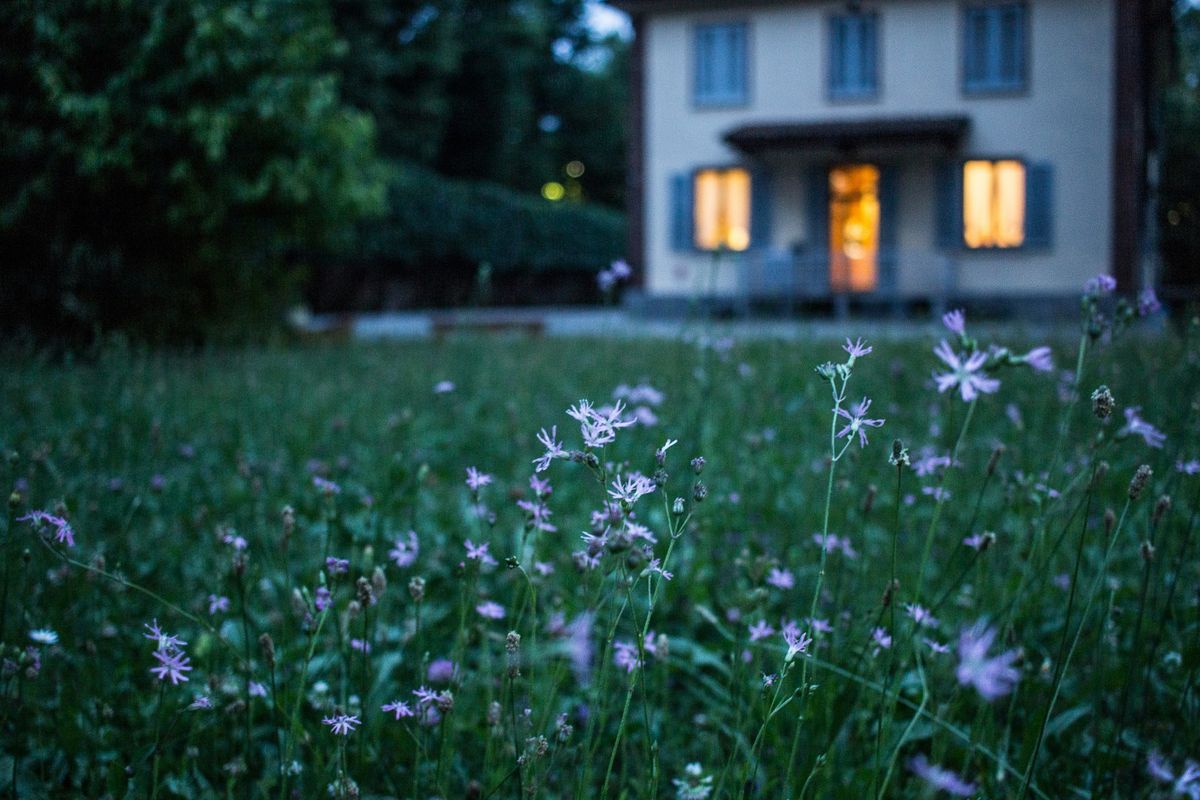Table of Contents
Embracing Upcycling: Transforming Trash into Treasure

Understanding the Basics of Upcycling
At its core, upcycling is the process of transforming by-products, waste materials, or unwanted products into new materials or products of better quality or for better environmental value. Upcycling is an imaginative way to reduce waste and give new life to items that might otherwise end up in a landfill. Unlike recycling, which often involves breaking down materials to their raw form, upcycling creatively reuses items without significant alteration, preserving their embodied energy.
Upcycling can be as simple as painting an old chair to give it a fresh look or as complex as converting discarded pallets into a chic coffee table. Here are some basic tips to get started:
- Identify items that are no longer in use but still have potential.
- Gather tools and materials you might need, such as paint, glue, or fabric.
- Let your creativity guide you; envision a new purpose for your old items.
Have you been dreaming of upcycling but you’re just not sure where to start? Our guide to upcycling for beginners will help you unleash your inner artisan.
Remember, upcycling not only benefits the environment by reducing waste but also adds a unique and personal touch to your home decor. It’s a sustainable practice that encourages innovation and can be a fun, rewarding hobby.
Creative Ideas for Upcycling at Home
Upcycling at home opens a world of possibilities for turning everyday waste into valuable household items. Transforming discarded objects into functional and aesthetic pieces not only embellishes your living space but also contributes to a more sustainable lifestyle. Consider the following ideas to get started:
- Convert old jars and bottles into chic vases or unique storage solutions for your kitchen or bathroom.
- Repurpose newspapers and magazines to create intricate baskets, coasters, or even wall art.
- Old clothing can be given new life as quilt covers, tote bags, or playful pillowcases.
Creativity is the key when it comes to upcycling. With a bit of imagination, items like cardboard boxes and plastic bottles can be transformed into decorative and useful objects. Here’s a simple guide to begin your upcycling journey:
- Identify items that are no longer in use but still have potential.
- Gather inspiration and ideas from online resources or community workshops.
- Plan your project, considering the tools and materials you’ll need.
- Execute your idea, taking the time to craft it with care.
Upcycling not only reduces waste but also allows you to add a personal touch to your home. It’s an engaging way to express your creativity while being eco-conscious.
Remember, the goal is to see the hidden potential in what might otherwise be considered trash. With upcycling, you’re not just crafting; you’re creating a positive impact on the environment.
Upcycling Techniques and Materials
Upcycling is the process of transforming discarded materials into new and improved products, a concept that is gaining traction as a sustainable practice. Boldly reimagining the potential of waste, upcycling techniques vary widely, depending on the materials and the intended end product. For instance, textiles can be given a new lease on life by converting old clothes into fashionable new garments or cozy home accessories.
Materials play a crucial role in upcycling. While synthetic recycled materials like PET can be treated similarly to new yarn, natural fibers such as wool and cotton often require more complex processing. Innovations in machinery and services have made it possible to meet the quality standards necessary for upcycled products.
Upcycling not only reduces the amount of waste but also sparks creativity and innovation in product design and resource utilization.
Here’s a list of common upcycling materials and their potential transformations:
- Plastics: Turned into decorative items, furniture, or even building materials.
- Metals: Repurposed into art, jewelry, or practical household items.
- Textiles: Old clothes and fabrics can become bags, quilts, or apparel.
- Organic waste: Can be composted or used in creating bio-based materials.
The Art of Recycling: Making the Most of Materials

Sorting and Preparing Your Recyclables
Properly sorting and preparing your recyclables is a critical step in the recycling process. Sorting types of waste is essential because mixed materials can contaminate the recycling stream, making it difficult to process and recycle effectively. To ensure that your efforts contribute to a sustainable future, start by separating your waste according to its type.
Recycling platforms like Trashie’s can sort materials into numerous grades, which greatly increases the efficiency of recycling. For instance, Trashie’s system sorts into 253 grades, allowing for 90 percent of items to be diverted from landfills. Here’s a simple guide to get you started:
- Paper: Newspapers, magazines, office paper (no food stains or wetness)
- Plastics: Bottles, jugs, and containers (clean and dry)
- Glass: Bottles and jars (clean and empty)
- Metals: Aluminum cans, tin cans (clean and without food residue)
Bringing your own food container and reducing the use of single-use plastics are practical steps you can take to minimize waste. Additionally, investing in quality items that last longer can reduce the need to recycle in the first place.
Remember, local recycling programs may have specific guidelines, so it’s important to check with them to ensure you’re sorting correctly. By taking these steps, you’re not only making recycling more manageable but also contributing to a cleaner environment.
Local Recycling Programs and How to Participate
Participating in local recycling programs is a key step towards sustainable living. Understanding the specifics of your community’s recycling program is crucial, as each one has its own set of rules and accepted materials. For instance, around 8,000 communities in the United States offer programs for plastic waste recycling, each with varying success rates and material acceptance policies.
To get started, familiarize yourself with the types of materials that your local program accepts. This may include plastics, metals, textiles, and even organic waste for composting. A simple way to keep track is to create a list or chart that you can refer to when sorting your recyclables:
- Plastics (e.g., PET bottles)
- Metals (e.g., aluminum cans)
- Paper products (e.g., newspapers, cardboard)
- Glass (e.g., jars, bottles)
- Textiles (e.g., clothing take-back programs)
Engaging in recycling activities not only contributes to waste reduction but also promotes community engagement and the use of shared spaces for a greener lifestyle.
Remember, recycling is more than just sorting waste; it’s about minimizing our environmental footprint. By actively participating in local recycling initiatives and encouraging others to do the same, we can make a significant impact on resource conservation.
From Recycling Bin to New Beginnings: The Lifecycle of Recyclables
Once your recyclables leave the curbside bin, they embark on a journey of transformation. The lifecycle of recyclables is a testament to the principles of Sustainable Materials Management. At the recycling facility, materials are sorted, cleaned, and prepared for their next phase.
Plastic waste, for instance, undergoes a meticulous process to ensure that only the ‘good’ plastic is recycled. The rest, often too contaminated or damaged, may be incinerated or disposed of in other ways. This selective process is crucial for maintaining the quality of recycled materials and ensuring their viability for future use.
- Sorting and cleaning
- Shredding or breaking down
- Melting and reforming
These steps are fundamental in repurposing materials such as PET, which can then re-enter the market as new products. It’s a circular approach that echoes the PET waste circularity concept, aiming to minimize waste and maximize resource efficiency.
The major stages in a material’s lifecycle are raw material acquisition, materials manufacture, production, use/reuse/maintenance, and waste management.
Composting for a Greener Homestead

The Benefits of Composting Organic Waste
Composting is a controlled, aerobic process that transforms organic materials into a nutrient-rich soil amendment, which is essential for maintaining healthy plants and gardens. By composting kitchen scraps and garden waste, urban homesteaders can enrich their soil naturally, avoiding the need for chemical fertilizers.
Worm bins or bokashi bins are excellent options for small spaces, producing compost that greatly improves soil health. This practice not only returns vital nutrients to the soil but also significantly reduces landfill contributions, making it a cornerstone of sustainable living.
Composting organic waste is a powerful way to decrease landfill contributions and foster a cycle of growth and sustainability.
Here are some ways to use compost effectively:
- Mix compost with topsoil to enrich garden beds.
- Add compost to potting soil for healthier container plants.
- Use compost as mulch to retain moisture and suppress weeds.
Starting Your Own Compost Pile: A Step-by-Step Guide
After setting up your compost pile, it’s important to maintain the right balance between ‘green’ and ‘brown’ materials. Green materials are rich in nitrogen, such as food scraps and grass clippings, while brown materials, like old clothing and dry leaves, are high in carbon. A healthy compost pile should have a mix of both to decompose effectively.
To ensure a speedy composting process, shred any old clothing into smaller pieces before adding them to the pile. This increases the surface area and accelerates breakdown.
Here’s a simple list to keep your compost balanced:
- Aim for no more than 25% old clothing in your compost.
- Always pair brown materials with a higher volume of green materials.
- Regularly turn your compost to distribute heat and moisture evenly.
Remember, a hot compost pile decomposes materials faster, so consider methods like worm composting or bokashi bins to maintain a warm environment. Mixing your finished compost into your garden’s soil or plant containers can greatly improve soil health, eliminating the need for chemical fertilizers.
Troubleshooting Common Composting Issues
Composting is a fantastic way to recycle organic waste into nutrient-rich soil, but it can sometimes be tricky. Bad odor is a common problem that often indicates a lack of air or too much moisture. To remedy this, turn your compost to aerate it and consider adding more brown material like shredded old clothing to balance the moisture.
Maintaining a balanced compost is crucial. Ensure your compost pile does not exceed 25% old clothing and mix it with plenty of green material to keep things balanced.
Here are some quick tips for maintaining a healthy compost pile:
- Aerate your compost regularly to prevent bad odors and speed up decomposition.
- Cut or rip old clothing into small pieces before adding them to the compost.
- Remember to balance your compost with a mix of green and brown materials.
- For faster decomposition, maintain a hot compost pile.
By following these steps, you can solve many common composting issues and create a thriving environment for turning waste into wealth.
Sustainable Living Through Shared Resources

The Rise of Community Sharing Spaces
Community sharing spaces are blossoming across urban and suburban landscapes, fostering a culture of collaboration and sustainability. These spaces often manifest as community gardens, where residents can come together to cultivate not just plants, but also relationships and a shared sense of purpose.
Community engagement in these gardens promotes a minimalist lifestyle, encouraging the use of shared resources over individual ownership. This approach not only benefits the environment but also strengthens social bonds within the community. By participating in community gardens, individuals can learn from each other, exchanging knowledge on sustainable practices and urban permaculture principles.
The concept of shared values is integral to these spaces. Residents unite over common goals such as reducing waste, conserving resources, and supporting local ecosystems. This camaraderie is evident in the way community members inspire and motivate each other to adopt more eco-friendly habits.
In the heart of these shared spaces lies the potential for a transformative impact on both the community and the environment. They serve as a testament to the power of collective action and the tangible benefits of living sustainably.
Here are some ways community sharing spaces contribute to sustainable living:
- Providing a platform for resource sharing and exchange of eco-friendly tips
- Encouraging the adoption of shared values like environmental stewardship
- Facilitating community support networks for a minimalist and intentional lifestyle
Collaborative Consumption: Reducing Waste Together
In the spirit of collaborative consumption, communities are discovering the power of sharing and leasing products to optimize utilization and reduce ownership costs. By sharing resources, we not only save money but also contribute to a more sustainable world.
- Sharing tools and appliances reduces the need for individual ownership.
- Leasing items like cars and bikes maximizes their use and minimizes idle time.
- Repairing and refurbishing extend the life of products, delaying the need for new production.
Embracing a circular economy is about keeping resources in use for as long as possible. This approach is crucial for sustainable living, as it maximizes value and minimizes waste.
The table below illustrates the impact of collaborative consumption in a community setting:
| Activity | Benefit |
|---|---|
| Sharing tools | Reduces purchase of rarely used items |
| Leasing vehicles | Decreases the number of cars needed |
| Repairing electronics | Extends product lifespan |
By engaging in these practices, communities can significantly reduce their ecological footprint while fostering a sense of togetherness and shared responsibility.
Implementing Sharing Systems in Your Community
Creating a sharing system within your community can be a powerful way to promote sustainability and reduce waste. Start by identifying common needs and resources that can be shared among community members. This could include tools, books, skills, and even time.
Italics are not just for emphasis, but also for highlighting the shared values that bind the community together, such as environmental stewardship and conscious consumption.
- Establish a platform for communication, like an online forum or local meetup group.
- Create a system for tracking and managing shared resources.
- Encourage community participation through workshops and events.
- Monitor and evaluate the system’s effectiveness regularly.
By pooling resources and fostering a culture of collaboration, communities can significantly reduce their environmental footprint and strengthen social bonds.
Remember, the success of a sharing system hinges on the active participation and trust of its members. Therefore, it’s crucial to maintain transparency and ensure that the benefits of the system are accessible to all.
Innovative Decor: Waste Material as a Resource

Home Decor Projects Using Discarded Items
With a little creativity and some DIY skills, you can transform everyday waste materials into stunning home decor pieces. Commonly discarded items like old newspapers, used bottles, and cardboard boxes are not just trash; they’re potential treasures waiting to be uncovered. Here are some ideas to get you started:
- Convert empty tin cans into chic plant holders or pencil organizers by wrapping them in decorative materials.
- Repurpose old bottles into elegant vases or unique lamp bases with a touch of paint and some embellishments.
- Use cardboard to create custom picture frames or decorative wall art.
Embracing the upcycling movement not only adds a unique touch to your living space but also plays a significant role in environmental sustainability.
Remember, the best out of waste is not just about aesthetics; it’s about reimagining the lifecycle of items that would otherwise contribute to landfill overflow. By choosing to upcycle, you’re making a conscious decision to reduce waste and promote a greener planet.
Best Practices for Creating Decor from Waste
When venturing into the world of upcycled home decor, it’s essential to start with the right foundation. Choose materials that are durable and manageable, ensuring your creations are both beautiful and long-lasting. Cleanliness is key; always thoroughly clean your chosen waste materials to eliminate any impurities that could mar the aesthetic of your final piece.
Planning is crucial to the success of your project. Draft your designs and consider the functionality of the waste material you’re repurposing. This foresight will save time and resources in the long run. Remember, creativity knows no bounds. Push the limits of conventional decor and explore innovative ways to give waste materials a new lease on life.
The transformation of waste into decor is not just an artistic endeavor but a step towards environmental stewardship. By diverting materials from landfills, you contribute to a more sustainable future while personalizing your space.
Here are some simple steps to get started:
- Sketch out your decor ideas.
- Select and clean your materials.
- Plan the construction of your piece.
- Assemble with care and creativity.
Embrace the challenge of turning the ordinary into the extraordinary and watch as your waste material evolves into a centerpiece of conversation and pride.
Showcasing Success: Inspiring Upcycled Decor Examples
The journey from discarded materials to upcycled decor is a testament to creativity and environmental stewardship. Showcasing successful projects can inspire others to see the potential in what they might consider waste. Here are a few examples of how everyday items have been transformed into beautiful and functional home decor:
- Old bottles turned into chic lamps
- Discarded trays repurposed as message boards or decorative trays
- Industrial elements like air ducts and brick walls incorporated into home design
The practice of creating home decor from waste not only adds a unique touch to your living space but also contributes to environmental sustainability. By turning waste into wealth, we reduce the amount of material that ends up in landfills and encourage a culture of resourcefulness.
Embracing the concept of ‘best out of waste’ allows us to beautify our homes and play our part in preserving the planet. Let’s continue to explore our creativity and turn everyday waste into extraordinary decor pieces, one project at a time.
5 Tips and Techniques for Growing Eggplant: From Seed to Plate
Cultivating Zucchini: Tips for a Successful and Abundant Harvest
Mastering the Art of Growing Carrots: Tips for a Bountiful Harvest
Mindful Consumption: How to Shop Sustainably and Reduce Waste — Sticky
Eco-Friendly Home: Transforming Your Living Space for Sustainability — Sticky
Green Living Hacks: Simple Ways to Embrace Sustainability in Your Daily Routine — Sticky


